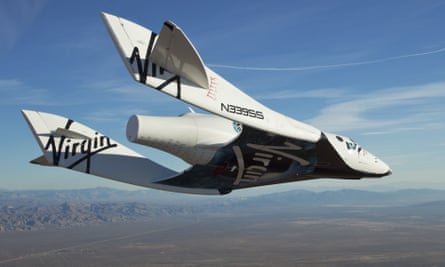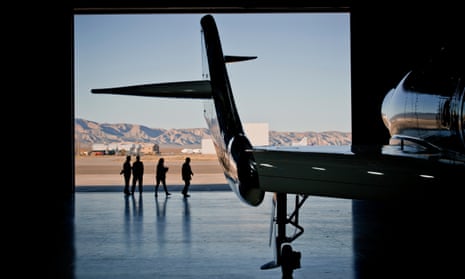Virgin Galactic will take its first trip into space within weeks according to Richard Branson, the firm’s billionaire chief and founder.
The feat would mark a milestone for the company which is in a race against Jeff Bezos’ Blue Origin and Elon Musk’s SpaceX to offer space flights to wealthy would-be astronauts.
In an interview with CNBC, Branson said his company was “more than tantalisingly close” to its first landmark flight beyond Earth’s atmosphere, stating: “we should be in space within weeks, not months.”
The entrepreneur added that he hoped to be onboard an early Virgin Galactic flight “in months not years”, with passengers willing to part with $250,000 (£192,000) taking their seats “not too long after that.”
Branson, who founded Virgin Galactic in 2004, originally promised suborbital flights – those that reach space without orbiting the planet – by 2009. But the firm’s plans have been delayed by numerous setbacks and the loss of the company’s previous space plane in a 2014 accident that killed co-pilot Michael Alsbury.
Test pilots have been putting the SpaceShipTwo craft, VSS Unity, through its paces high above the Mojave desert in California. In the most recent test in July, the space plane was released from its jet-powered carrier aircraft, VMS Eve, at 46,500 feet before the Unity’s pilots lit its rocket. The 42-second burn blasted it to 171,000 feet, nearly five times the cruising altitude of a transatlantic passenger plane. Its top speed was logged at Mach 2.47.
To reach space, the pilots must take the Unity higher still. The upper atmosphere is generally regarded to give way to space at an altitude of 62 miles (100km), nearly twice the altitude achieved in the July test flight.
Branson has had astronaut, fitness and centrifuge training to prepare himself for his trip into space. Asked in the interview whether he was confident enough people would pay for tickets, he told CNBC: “If I have a room full of 10 people, eight out of 10 would love to go to space if they could afford it.”

“I think the market for people who would love to become astronauts and go to space is gigantic. And it is up to us to produce as many spaceships as we can to cater to that demand,” he added. The ticket price could ultimately fall to $50,000, he said.
Virgin Galactic is not the only firm that hopes to make a business out of space tourism. In April, Bob Smith, the head of Jeff Bezos’s Blue Origins space company, told CNBC the firm still hoped to send tourists to the edge of space by the end of the year. Meanwhile Elon Musk of SpaceX has announced plans to send a passenger around the moon in 2023.
SpaceShipTwo was designed to carry six passengers to the edge of space at an altitude of at least 50 miles. After a minute-long rocket burn, the rocket plane would continue its upward trajectory and then fall back to Earth, giving passengers time to float freely for a brief spell, and see the curvature of the Earth. Commercial flights will take off from a spaceport in New Mexico. In July, the UK Space Agency announced a £2.5m grant for the construction of a spaceport on the northern coast of Scotland after it was judged to be a prime site from which to lob satellites into orbit.
